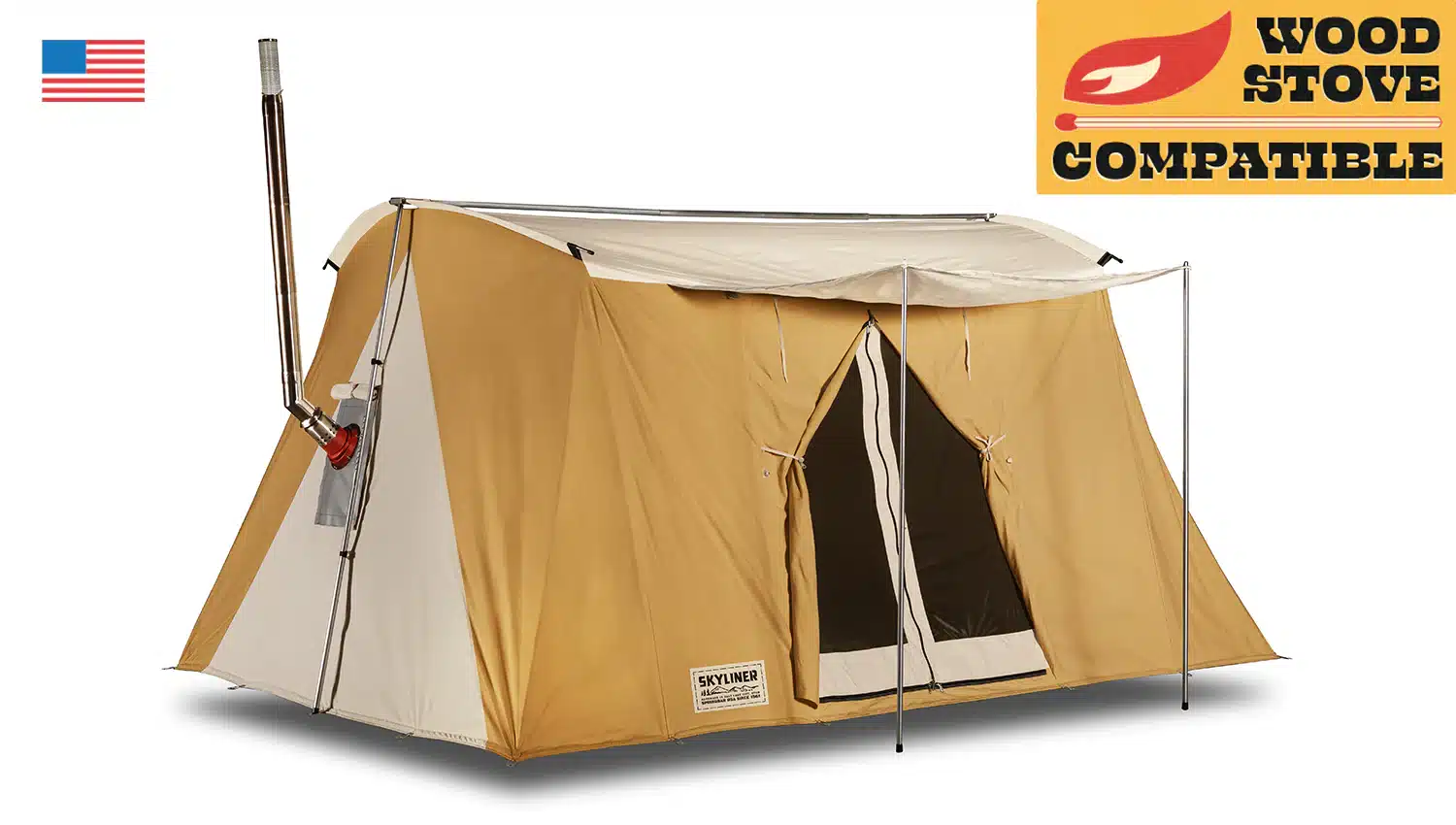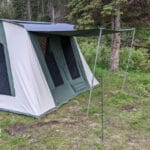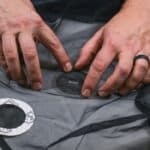Winter camping in cold weather or snow can be miserable if you can’t stay warm. Likewise, summer camping in a tent that traps all the heat inside is irritating and uncomfortable. The Springbar Skyliner tent aims to fix all that with wood stove compatibility for when it’s cold and breathable cotton canvas for when it’s hot. But with a price tag of more than $2,000, you’ve got to question whether it’s worth the money.
I’ve been fortunate enough to get one and take it out camping several times now with my family. I’ve examined it thoroughly, so this Springbar Skyliner tent review is based on real world experience.
Springbar Skyliner Tent Review at a Glance
If you’re more of a visual learner, you can watch our detailed review of the Springbar Skyliner tent on YouTube instead!
The Springbar Skyliner is a versatile canvas tent that’s able to withstand high winds, rain, and bad weather. It improves upon the classic Springbar design with a more voluminous interior and key structural reinforcements. It’s a great choice for families, car campers, and hunters.
Key Specs and Features:
- 140 sq. ft. (10 ft x 14 ft footprint) with 6.5 ft high ceiling
- Front and rear awnings (highly adjustable)
- Wood stove compatible with built-in stove jack
- 3 large windows and extra wide front door with screen
- 100% cotton duck canvas (8.5 oz walls, 10 oz roof)
- Canvas treated for water repellency and anti-mold (fire-resistant around stove jack)
- Waterproof, heavy-duty (12 oz) seamless polyvinyl floor
- Aluminum alloy poles with steel reinforcements
- #10 YKK zippers
- Package includes: 1 tent, 1 pole set, 23 stakes, 4 awning ropes, 1 stove jack insert, 1 fair weather screen insert, 2 hanging organizers, 1 mesh loft, 1 owner’s guide
- Comes in 3 bags (tent, poles, stakes) with combined weight of 97 pounds
Pros: Spacious and comfortable, easy to move around in, key reinforcements for bad weather and winter camping, hot tent ready, made in USA
Cons: Pricey, requires careful pitching in sustained rain, limited availability
Outdoor Empire Score: 4.5
Workmanship & Durability 5 | Ease of Use 4 | Comfort 5 | Features 5 | Versatility 4 | Value 4
We evaluate tents based on six criteria: workmanship and durability, ease of use and setup, overall comfort, features, versatility, and value. A tent is rated from 1 to 5 (worst to best) in each category, and the overall Outdoor Empire Score is the average of these ratings.
Check out our comprehensive comparison of the Best Canvas Tents!
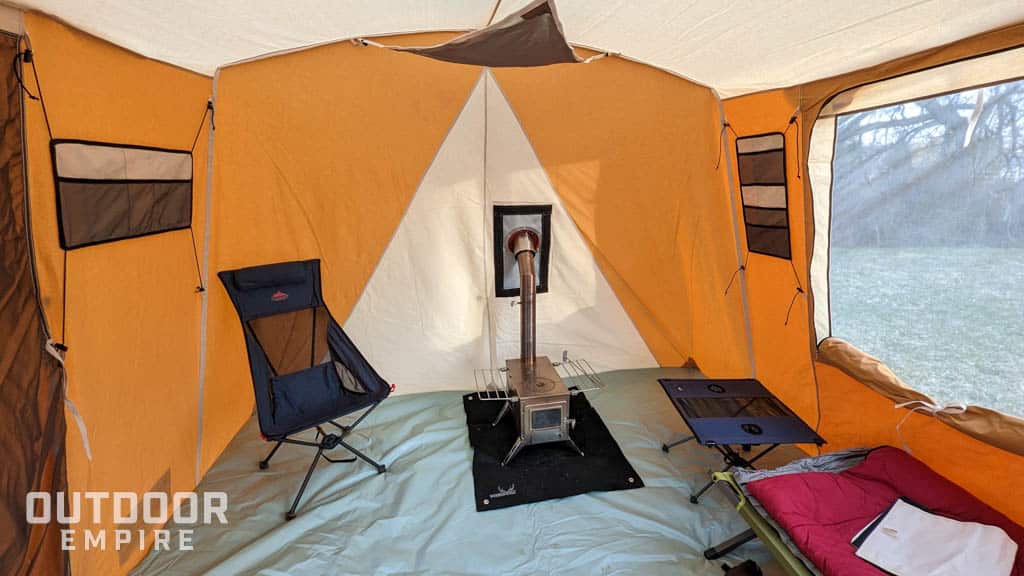
Disclaimer: This tent was donated to us by Springbar so we could test and review it. However, this post is not sponsored, Springbar didn’t pay us anything, and they did not get to preview the article before publishing. We can say what we want and the opinions here are our own. We don’t earn a commission if you purchase a Springbar Skyliner tent. The links to Springbar.com are not affiliate links, but some others may be included. We wrote this article because we believe the product is of high quality.
Exceptional Workmanship Made in America
Springbar produces the Skyliner tent in a modest factory in Salt Lake City, Utah. They even manufacture some of the poles on-site.
The company works hard to source as many components as possible from American suppliers. The screen mesh, stake loops, stakes, poles and more are all made in the US. The canvas is dyed and treated in Georgia.
Materials and Components
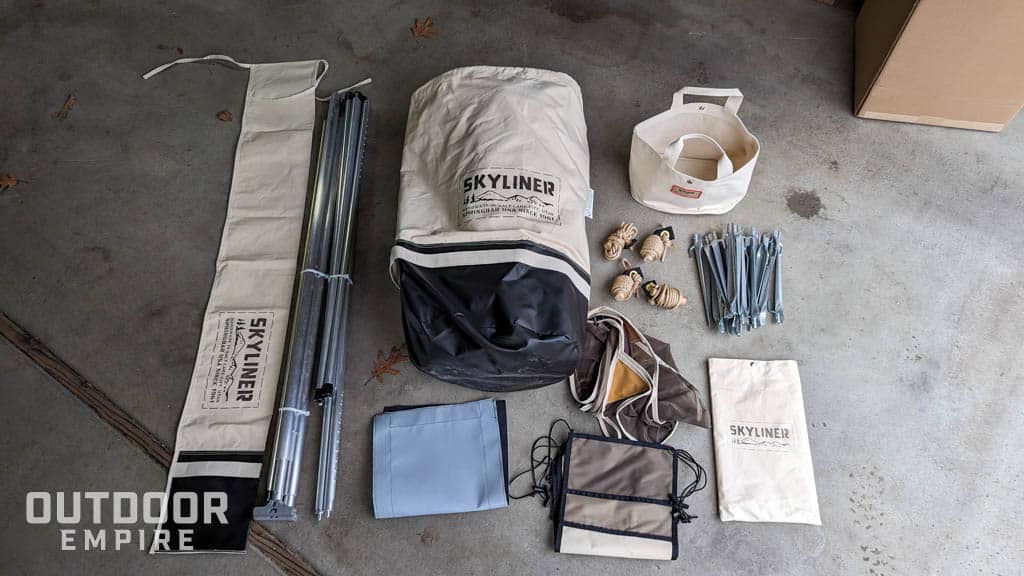
The Skyliner is constructed from a sturdy cotton duck canvas that has been treated with a waterproofing agent before being cut and sewn into a tent. The panel surrounding the stove jack is a heavier 12 oz canvas that has been treated with a fire retardant for safety.
The floor is made of a seamless, light green 12 oz laminated vinyl material. It tends to get dirty easily, but it’s also simple to clean. It’s also tough enough that you don’t really need a groundsheet, unless you’re camping on sharp rocks.
The steel tent stakes that come with the Skyliner are the best I’ve ever used. They have a wedge shape that doesn’t come loose easily, even in sandy terrain, like where I camped with this tent for the first time in Moab, Utah. The nail-style stakes included with competing tents like Springbar’s Classic Jack or Kodiak’s Flex-Bow don’t hold up as well. Additionally, the Skyliner has more stakes and stake loops securing the tent to the ground than these other tents, making it even more weather-worthy.
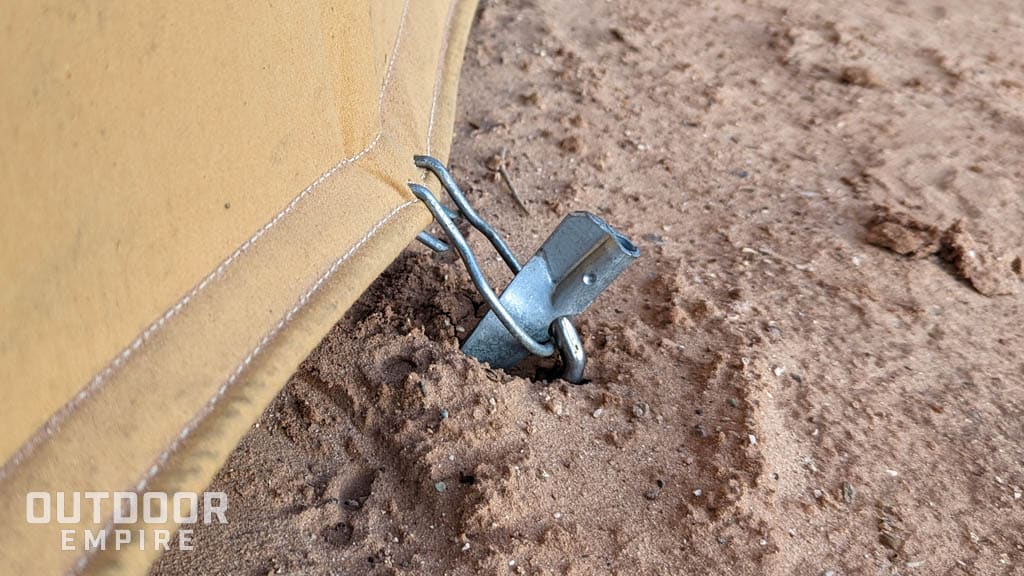
The poles are made of aluminum, which is lighter and more corrosion-resistant than galvanized steel poles. However, some of them have steel reinforcements in areas that are under the most tension, like the roof ridge pole. I appreciate how adjustable they are on both the tent and the awnings, compared to the fixed pole lengths on comparable tents.
Durability
The stitching inside is flawless, and there is no plastic to be found. It’s clear that Springbar follows strict quality control protocols.

One of the standout features of the Skyliner is its exceptional durability when compared to a low-cost polyester or a lightweight technical nylon camping tent. You don’t have to be ginger with it. And if something rips, you can repair canvas quite easily. This tent is built to last for decades.
Easy Setup but May Require Some Fine Tuning
Setting up the Skyliner is a breeze, taking me only about 10 minutes to do it myself. It’s no more difficult than any other tent and much simpler than a wall or bell tent. Here are the steps I take:
- Lay the tent out on flat ground.
- Stake the tent down as it is not freestanding.
- Insert four flexible “spring bars” into the sleeves on either end.
- Connect the spring bars to the ridge pole at the T-joint.
- Touch the ends of two ridge poles over the roof and press down to tension the roof.
- Slide the pole sleeve over the ridge pole joint.
- Insert the two end poles into the T-joint and plant the ground end on the stake loop below.
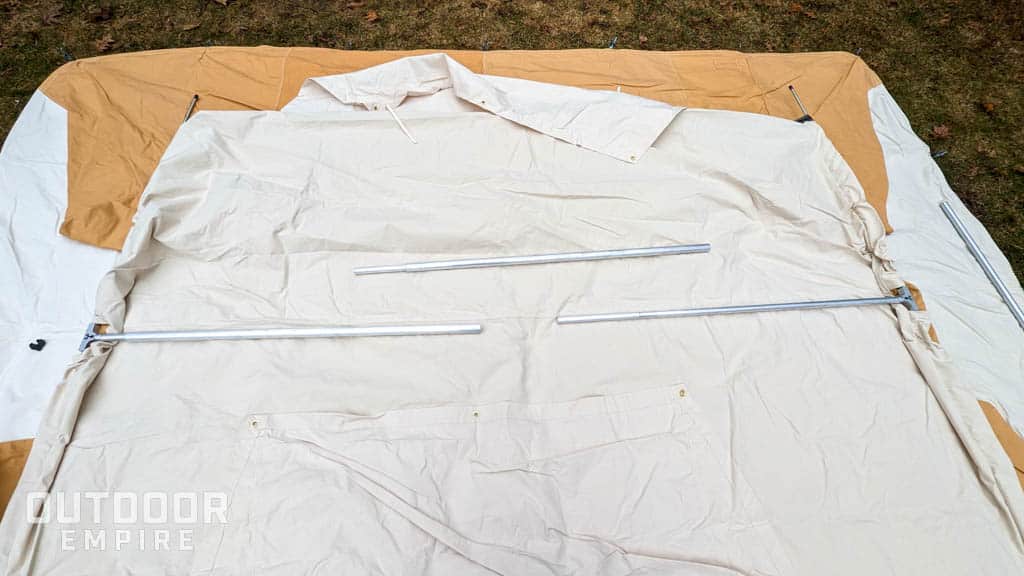
During my first time using the Skyliner, we experienced some wild weather. I learned that you have to pay close attention to how you pitch it. Since the roof is quite large, you need to make sure you use those guy lines and tie them out to stakes at a wide angle from the awning poles to get the roof as taut as possible in order to shed water properly.
Although setting up the Skyliner in bad weather is a bit finicky, the end result is a more robust tent than the Teton Mesa, Kodiak, or Classic Jack.
An Upgrade to the Classic Springbar Design
The Springbar design was originally invented by Jack Kirkham Sr., and his company held a patent for it from the 1960s until it expired in the early 2000s. Other companies, like Kodiak Canvas, Teton Sports, and White Duck Outdoors, started using the same design after the patent expired.
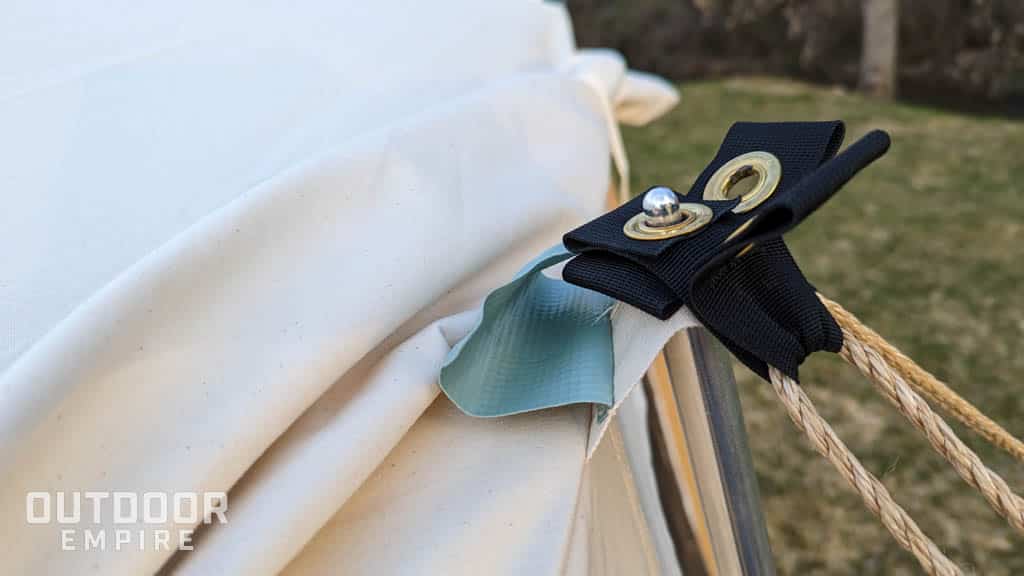
Jack Sr.’s son, Jack Kirkham Jr., who still works for the company, designed the Skyliner tent. He added key reinforcements to the original design, such as the ability to secure the awning poles directly to the tent wall and run guy lines out to stakes, which adds more structural integrity to the near-vertical walls in a windstorm.
Voluminous Space for Ultimate Comfort
What’s great about the Skyliner is its voluminous interior.

The walls stand nearly vertical like a wall tent. So even at 6 ft 1 in tall, I can walk around the whole tent inside without rubbing my head on the roof. It also means your cots and gear don’t rub up against the sidewalls so easily, which can draw in moisture or drive claustrophobic people nuts.
At 10 ft by 14 ft (140 sq. ft) the Skyliner can sleep up to eight people. Though I’d say that’s without cots and leaving most or all the gear outside. It is, however, very comfortable for my family of five and Huck, the dog. If you’re only two, this will feel luxuriously large.
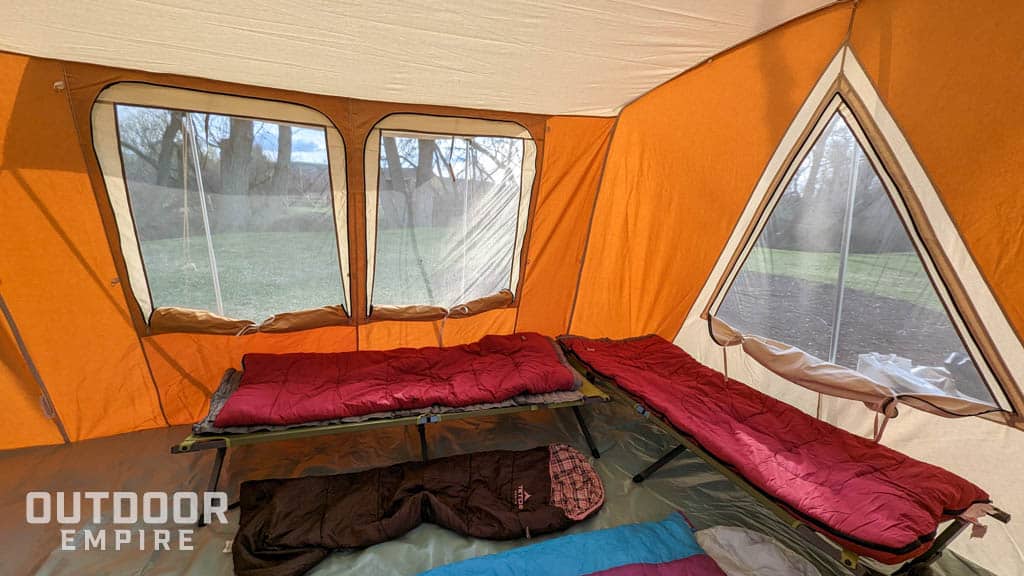
Recommended: How To Select the Right Tent Size
During our very rainy campout near Arches National Park, we were hunkered down inside the Skyliner for about 18 hours straight. But we didn’t mind at all. The kids read books, we watched a movie, and played cards. We cooked dinner on the tent stove and baked chocolate chip cookies in the Winnerwell Fastfold oven. That night, my wife said to me,
“I don’t think we can ever go back to the way we used to camp!”
Overall, the Skyliner is a very livable tent, even for families and extended camping trips. My family fits in there comfortably with one entire end reserved for gear and the wood stove for when we are hot tenting.
Feature-Packed Design: Stay Cool (or Warm) and Organized
The Springbar Skyliner tent provides excellent ventilation, thanks to the breathable canvas and large windows.
I absolutely love the giant door on this tent. It’s easy to move things in and out, including an assembled cot. And unlike most other tents in its class, it has with a solid exterior door and a separate interior mesh door. The unused door can be zipped up (solid YKK zippers, BTW), or tied back when not in use.
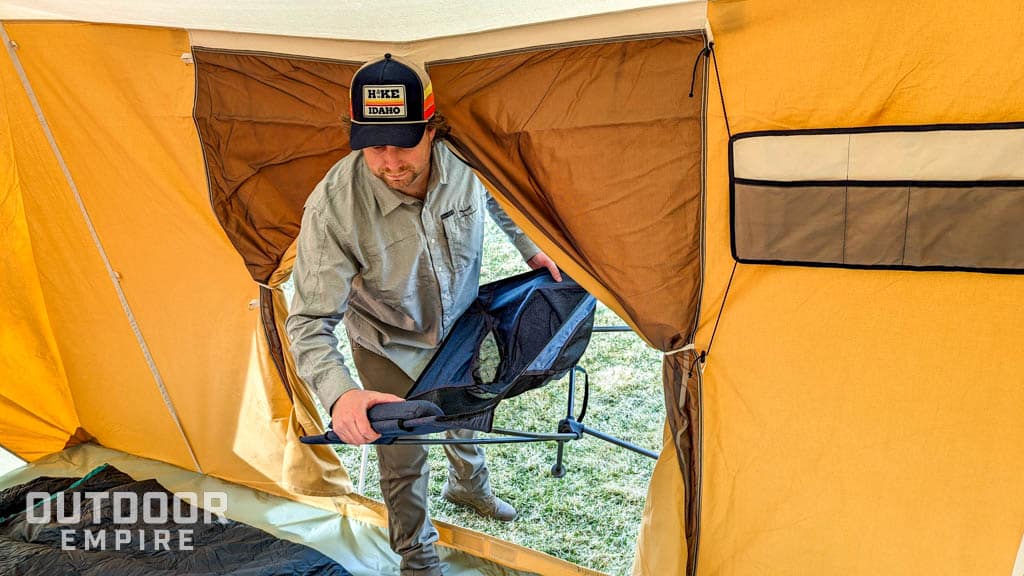
The included organizers are useful and thoughtfully designed. Especially the unique loft which doesn’t get in the way of your head as much as on the Kodiak or Teton tents. There are no built-in pockets, but this isn’t an issue for me personally.
Additionally, there’s a small zippered access port for running an electrical cord or propane hose.
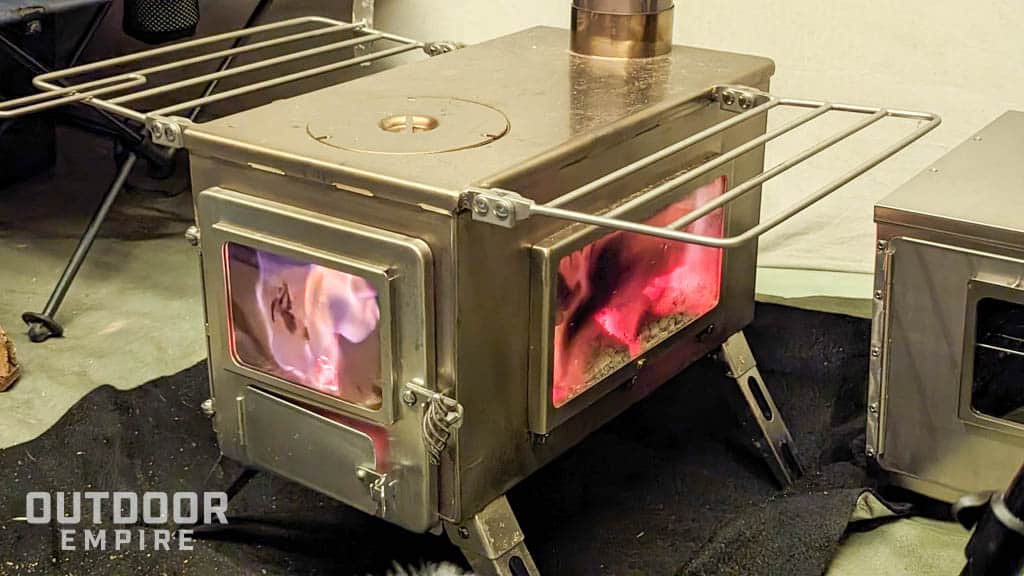
The best feature of the Skyliner is its hot tent readiness, with a stove jack flap that doubles as a small window when the stove is not in use. The tent comes with the stove jack material and an easy-to-follow pattern to cut a hole in the right spot for a Winnerwell stove. This system is smooth, easy, and worry-free. I can attest to its convenience after using it myself.
On a White Duck, Teton or Kodiak tent you’ll have to come up with a DIY solution to add a stove jack and use a wood stove inside your tent. This will likely void your warranty and I’d be nervous about leaks or other problems.
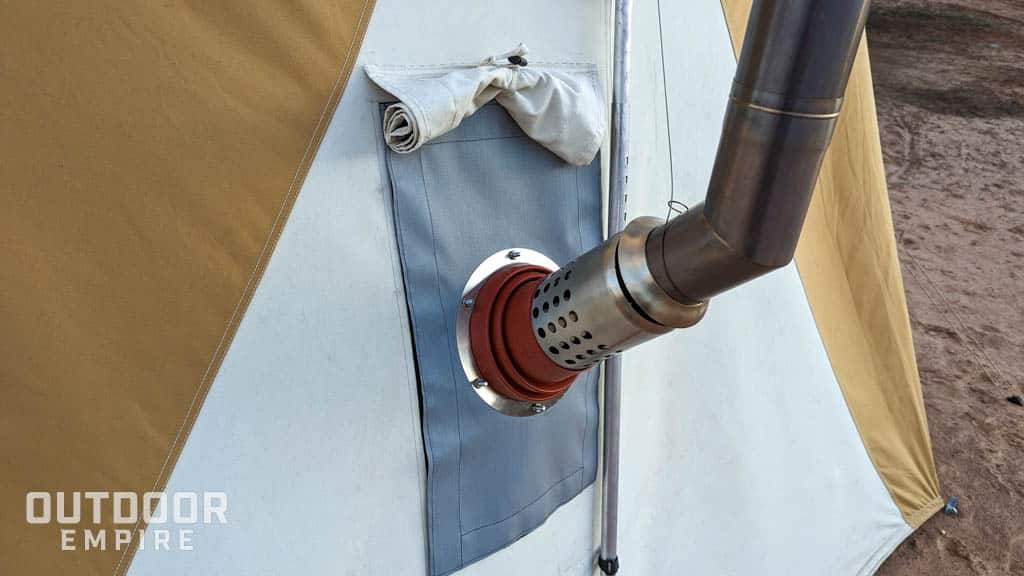
Versatility for Winter Camping to Backcountry Trips
All these features, along with the durability of the Skyliner, make it worthy of true four-season camping. It will keep snow and cold at bay for winter camping and make a comfortable outpost for extended stays in remote backcountry.

Outfitters, hunters, families, and car campers will all appreciate the utility of this tent. The hot tent feature allows you to not only stay warm but also prepare meals and relax inside, no matter the weather outside.
So far, I have only had a few camping nights in this tent, but my impression of it is positive. I don’t think heavy snow, scattered rain showers, hail, or thunderstorms are a concern for this tent at all.
My First Experience in Heavy Rain
One issue I noticed on my first night out was that you have to pay attention during sustained rain. After about 7-10 hours of straight rain, some droplets formed on the interior roof and began to drip. It was slow and unalarming but required attention.
When it gets really soaked and wet the roof fabric seems to sort of contract and ripple. This can lead to water pooling up and eventually seeping through.
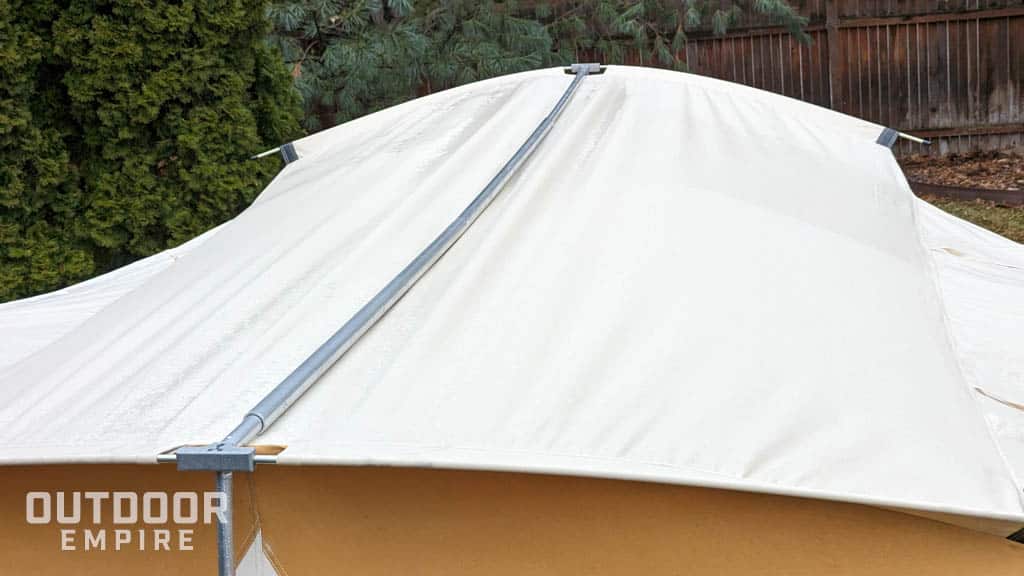
I figured out that how you pitch the tent is important. After adjusting the awnings and guy lines so the roof was more taut, this was no longer an issue.
I contacted Springbar about this and found out that I had one of the first samples of the Skyliner that was produced for field testing. They had identified the issue and made some changes to the production units.
When I received my brand new production unit and seasoned it in my backyard, I noticed some rippling on the roof material. But it’s hard to tell if that will be an issue. Only long-term use and testing will determine how well it holds up to intense rainstorms. I’ll update this review as I learn more, but this is likely not a major concern. And if you’re a fair-weather only camper, it doesn’t matter at all.
Is the Springbar Skyliner Worth It?
At a list price of $2,099 at the time of writing, the Springbar Skyliner is among the most expensive tents available.
This is about $900 more than the Classic Jack 140 and more than double what a Kodiak Flex-Bow in the same size costs.
However, the Skyliner is also a buy once, cry once sort of deal.
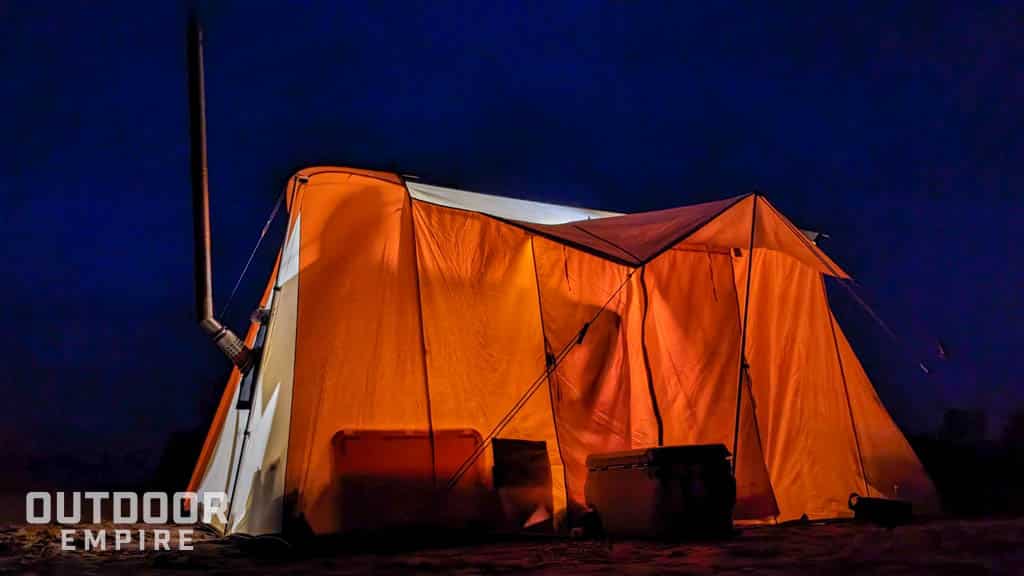
What you get for the money includes:
- A rare Made in the USA outdoor product
- A quality, lifetime tent that can be repaired when something goes wrong
- More interior volume and space than any other tent in its class
- A purpose-built hot tent that can sleep a whole family
- Superior adverse weather reinforcements like the awnings, sidewall supports, and staking system
- Lifetime satisfaction guarantee with top-notch customer service (I checked)
I cannot say if this price point is reasonable for you. But if your budget allows for it, you are getting a unique and high-quality product.
If the price point is too high, consider the Springbar Classic Jack 140. It shares many of the same features and benefits, but at a significantly lower price. It is still hot tent ready, but does not have the same weather-resistant features and spacious feel as the Skyliner.


